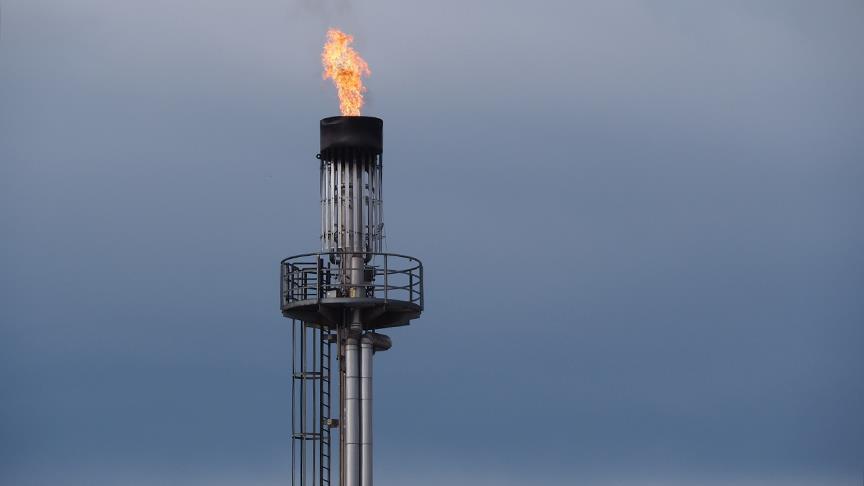- The Writer holds an MSc in Eurasian Political Economy & Energy from King’s College London and also an MA in European Studies from Sabancı University.
Widespread energy subsidies in the Middle East and North Africa (MENA) have been the most pervasive and controversial fiscal policy tool used in the region. Albeit with inefficiencies and high budgetary costs, energy subsidies continue to be an important part of the social safety net.
With the fall in oil prices in late 2014 along with regional instability and external pressures, many MENA states decided to enact subsidy reforms to ease the massive pressure put on government finances that undermine long-term fiscal sustainability. Yet any reforms in energy subsidies are both politically and technically complex to implement.
To provide social protection and share hydrocarbon wealth, countries in the MENA region have kept energy prices below market level. Accompanied by the rising oil and gas prices during 2000’s, fiscal expenditure for energy subsidies has grown intensely in parallel with rising domestic energy demand. The International Monetary Fund estimated that in 2014 energy subsidies in the MENA region were equivalent to half of those globally. While the Egyptian government’s spending was $21 billion for energy subsidies, approximately 20 percent of all government spending in 2014, the Moroccan government’s spending during the same time period was more than its education and health spending combined.
The accumulative negative impact of widespread energy subsidies can be seen in falling investment rates, increased cross-border fuel smuggling, the rise in energy intensity and the surge in domestic energy consumption.
Because of price caps on electricity and flat subsidy payments, many infrastructures in the MENA region suffer from low-quality energy services.
Since subsidy payments do not cover infrastructure expenses incurred, it has resulted in low-quality services, which is most evident in the electricity sector.
The sharp differences in fuel prices between neighboring countries due to different subsidy applications, culminate in the exacerbation of fuel shortages and contribute to the increase in contraband trading. Fuel smuggling between Syria, Jordan, Lebanon, Tunisia Libya, among others, has become apparent with devastating consequences.
The very high reliance on hydrocarbons generated by very low fossil fuel prices is another consequence of energy subsidies. Since fossil fuel prices are so low in the MENA region, the diversification of the energy mix towards other alternatives sources has been hindered. This has been seen particularly during the commodity price cycles, and the lack of energy diversity makes these countries very prone to price shocks.
Weak macroeconomic conditions, a lack of government credibility and administrative capacity, along with deep concern over the potential negative impact on poor households have been some of the major factors against effective energy subsidy reform in the MENA.
Among the various barriers to subsidy reform, the Arab Spring in late 2010 was proven to be the strongest case that impeded further reform in the region. Regardless, gradual reform did take place in the MENA since 2008. But a fear of incitement and the popular backlash against the Arab uprising has either suspended or shelved many MENA countries from continuing their energy price liberalization programs.
The ousting of the Egyptian and Tunisian governments, together with the outbreak of political protests across the region, strongly impeded the development of highly anticipated energy subsidy reforms. In another instance, Jordan’s energy subsidy reform, which started back in 2008, faced much opposition and stalled after 2011. Even though energy subsidies skyrocketed in 2011 and reached their peak at 40 percent of total government spending, the Jordanian government faced strong resistance in their attempts to bring energy subsidy reforms back on the table even after the uprising subsided in the region.
In another case in Morocco, where there was a ballooning of energy subsidies through their well-run program, any attempts at reform forced the country in 2011 to freeze energy prices to avoid further protests.
Egypt’s fiscal deficit was so high during the 2000’s that the government was forced to reform energy subsidies. The reform package that was underway was suspended in 2010 and since then, the government has shied away from taking further risks at reform.
Among all the MENA states, Iran has been the only country with comparatively better results. A compressive communication strategy used by the Iranian government has been relatively successful compared with other MENA states. To avoid a backlash, the government worked meticulously to campaign in favor of reforming energy subsidies. Part of the strategy was to use cash grants and this proved successful. However, the reform plan faced complications when oil prices dropped and international sanctions tightened.
The highly contentious issue of energy subsidy reform in the region requires bold measures, as is still a delicate task for MENA states. The Arab uprisings added a further strain to reforms that were evidently problematic years before these events.
The various comprehensive fiscal programs that aimed at reforming energy subsidies in Egypt, Yemen, Morocco, Jordan and Iran with the view to using hydrocarbon wealth more rationally, have failed. Currently, there are little or no indications that energy subsidy reforms can successfully be implemented anytime soon in this region.
- Opinions expressed in this piece are the author’s own and do not necessarily reflect Anadolu Agency's editorial policy


